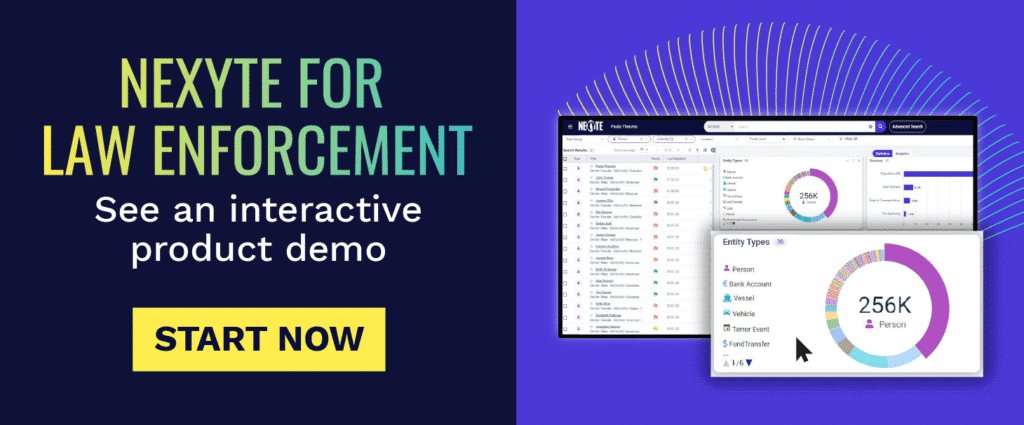Evolution of Criminal Case Selection
From the Future Case in the “Bottom Drawer” to Decision Intelligence
In the archives of the US Internal Revenue Service Criminal Investigation (IRS-CI) history, the image of a seasoned criminal investigator stashing away a file in the metaphorical “bottom drawer” is iconic. While rooted in practicality, this practice is symbolic of a bygone era when criminal case selection was a manual, localized, and often possessive endeavor. But as technology has woven its threads into every facet of our lives, the landscape of crime and investigation has transformed drastically. Enter the era of decision intelligence – a paradigm shift that has revolutionized how federal government agencies identify, prioritize, and solve criminal cases.
Cast your mind back to when “snail mail” cluttered physical inboxes and tax returns were submitted on tangible sheets of paper. In this world, IRS-CI special agents toiled within the confines of their geographic areas. Leads trickled in from other government agencies, newspaper articles, sightings of luxury automobiles, suspicious activity reports, and the often-invaluable informants. The experienced special agents, engrossed in their ongoing cases, would preserve these files in their personal “bottom drawer” – a reservoir of prospective cases for the future. These cases were cherished, guarded, and, in many instances, jealously retained against the backdrop of a competitive environment.
With the advent of online filing, data analytics, and electronic banking, the cocoon of geographic restriction burst open. The digital realm eradicated borders, enabling electronic fraud to metastasize at an unprecedented rate. Consequently, the trusty “bottom drawer” method – though once a dependable ally – ceased to be efficient. A better way was needed to ensure that special agents were not merely working cases but working the right cases – the ones with the highest stakes, the greatest impact, and the potential to dismantle intricate criminal networks.

While the era of the “bottom drawer” technique served its purpose, its efficacy waned when it came to addressing the ever-evolving landscape of financial fraud schemes and the intricate web of money laundering activities, often referred to as “tax fraud in progress.” Criminal ingenuity has always thrived on exploiting novel technological avenues. From the proliferation of online filing and electronic direct deposits to the world of wire transfers and cryptocurrency – the arsenal of tactics for criminals to exploit the system and innocent victims seems endless. As they adapt and refine their tactics, the solutions to fight these crimes must evolve in parallel. This is where the power of decision intelligence and innovative data analytics truly shines. By leveraging data fusion and advanced machine learning, agencies can tackle emerging threats and fraud schemes in near real-time and empower analysts to proactively anticipate future fraudulent endeavors through predictive analytics.
My 25-year career with IRS-CI spanned the evolution from paper tax returns and “bottom drawer” cases to the application of decision intelligence and data analytics to quickly identify entities, relationships, and other evidence to aid in selecting the most impactful cases. Early in my career, I had the privilege to oversee a fraud detection center that was staffed with incredibly talented and dedicated investigative analysts who would tirelessly review tall stacks of paper tax returns, one tax return at a time. They relied on their experience and keen memory to hone in on suspicious characteristics and to group similar returns that might be part of a bigger scheme. The goal was to identify and build a fraud case for a special agent to investigate. Sometimes, these referrals landed in a “bottom drawer.” The review of piles of paper tax returns eventually evolved into manual spreadsheets designed to aid the analyst and agent in evaluating, analyzing, and developing potential cases. These spreadsheets helped but still had to be manually manipulated and evaluated. Now, with decision intelligence solutions, in a matter of minutes, one report of a stolen identity and a false $2,000 tax refund can potentially lead to the identification and linkage of thousands of false tax returns, all submitted by the same identity theft ring claiming millions of dollars. This is just one example of my case selection evolutionary journey. I witnessed first-hand the incredible impact that decision intelligence has had, and will continue to have, on the criminal case selection process.
Irrespective of the investigative agency or the nature of the criminal activity – identity theft, investment fraud, tax evasion, human trafficking, drug crimes, or the sinister world of terrorist financing – a common thread weaves through all these cases. Criminals will attempt to conceal their identity and disguise their conduct. Decision intelligence empowers agencies with the capabilities necessary to detect and disrupt illicit activities, prevent future crime, and allocate resources more effectively. By strategically selecting the most compelling and impactful cases to work on, agencies wield a powerful deterrent against potential future criminal activities. When high-stakes cases are meticulously investigated and perpetrators are brought to justice, the message is clear: crime does not pay. Additionally, hard numbers, trends, and patterns unearthed from the data paint a vivid picture of the magnitude of the challenge. This symbiotic relationship between data analytics and resource allocation transforms decision-making into a precise, evidence-backed endeavor.
By deploying decision intelligence and data analytics, once-isolated investigative leads can now be effortlessly shared among colleagues and partner agencies. This enables seamless collaboration, efficient case selection, and strategic investigations, rendering the concept of the “bottom drawer” obsolete.
Learn more about NEXYTE, the decision intelligence platform from Cognyte that revolutionizes data fusion and machine learning to maximize efficiency and provide actionable intelligence in your investigations.